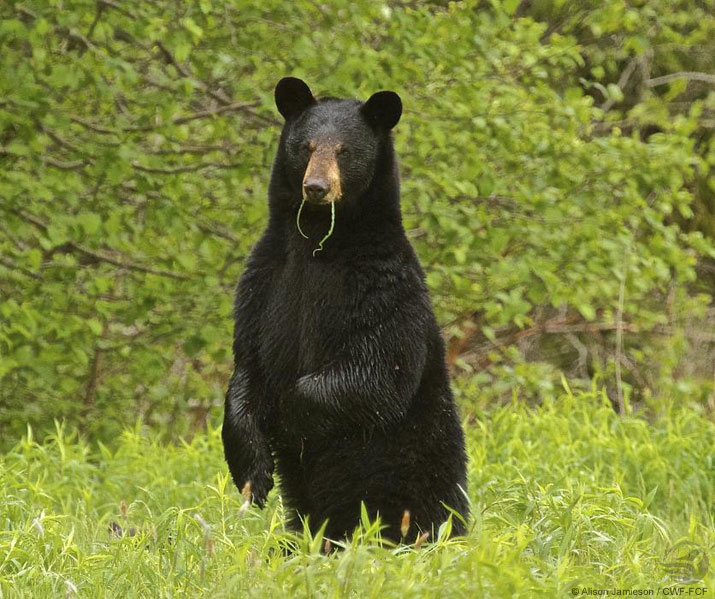
A. Great question. But first, let’s try and prevent an encounter! When you are in areas with bears always be on the lookout, make lots of warning noises and don’t forget your bear/pepper spray. Be on the lookout for any signs of bears such as rotten trees torn apart, tracks or droppings. In the spring, also be mindful of females with young cubs and never get between them.
Now let’s clear up some common misconceptions about bears:
- Bears are fast runners – even downhill
- Bears are good swimmers
- While mature grizzly bears aren’t good at climbing trees, all black bears and young grizzlies are
- Bears have good vision, hearing and a great sense of smell
Please remember that what follows below are only guidelines. It is advisable to do your own research on local bear sightings, behaviour and best practices. Every situation is different and bears can be unpredictable!
Let’s look at a few situations:
- You see a bear but it doesn’t approach
If you see a bear but it’s not approaching – stay calm, do not make eye contact but keep the bear in view, moving away without turning your back on the bear and without running. - You see an approaching or stalking bear
If you are in this situation it is best to find a safe place such as a nearby building. If there is no place to go, talk softly to it, do not run and avoid eye contact. Depending on the situation you may have to use whatever objects are around (such as branches or rocks) to try and intimidate the bear and make yourself appear larger. - The worst case scenario. A grizzly bear is going to attack you.
In this case you don’t want to agitate the bear further so play dead. Get into the fetal position with your hands behind your neck and bury your face in your knees. Wait until the bear has left the area before moving.
If the bear doesn’t leave and the attack becomes violent you may need to fight back concentrating on the bear’s face, eyes and nose using whatever strength and objects you can find. - The worst case scenario. A black bear is going to attack you.
With black bears do not play dead. Try and retreat from the attack. If the bear is approaching you, make yourself look bigger by yelling and waving your arms. If you are with a group of people, stay together. If the bear keeps getting closer use your bear spray or anything else you may have to distract or threaten the bear. Always make sure the bear has an escape route. - If the bear makes contact with you, now may be the time to fight! Kick and hit the bear with anything you can find.






